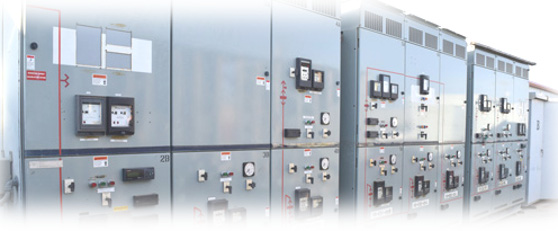by Jim Hardy, BCS Switchgear, Inc.
“When customers talk to us about replacing their existing switchgear, they are looking for an economic basis for making a decision to keep their existing switchgear vs. replacing it.”
Replacing Switchgear
The major concerns engineers and management have are based on safety, reliability and costs.
Most companies use a financial model to decide which projects to proceed with. We are suggesting that keeping the existing switchgear in service be treated as a new project, then comparing the costs.
Keeping existing equipment

✔ Low and medium voltage switchgear (including circuit breakers and contactors) are approaching or beyond their expected useful life.
✔ Employee safety is reduced due to original product design not meeting current standards and improper lubrication and maintenance over time.
✔ Arc chutes of some old contactors and circuit breakers contain asbestos
✔ Increasing plant risk of forced outages
✔ Increasing difficulty locating replacement parts
✔ Increasing maintenance expense as more parts require replacement? Not sure about this one
In financial terms, the choice between keeping the existing equipment and replacement is to determine which one has the highest net present value (NPV). There are a number of other financial models which could be applied, but they all have the same problem:
Calculating a value for replacement is fairly straightforward (hoping no surprises come up during the project!), but there a lot of variables in calculating the value of keeping the equipment. Or assumptions might have to be made that might not be valid.
Replacing Equipment
✔ Increased safety particularly with regard to NFPA70e
✔ Reduced maintenance cost
✔ Opportunity to improve location or change the operating environment at some facilities
✔ Total cost of switchgear including installation and downtime
For example:

Will the price and availability of parts be stable over time?
Will the cost of downtime be constant?
What are the worst case risks associated with asbestos?
Increased expenses caused by changes in codes and standards?
We believe that evaluating the option of keeping the switchgear, including the risks, will show that keeping the existing is a more expensive option than it may first appear to be.
Also, there are upgrade options that replace the circuit breakers and contactors without replacing the switchgear. This could reduce the risks of keeping the switchgear and reduce the costs of replacing and installing new switchgear.
You can see examples on our website : www.bcsswitchgear.com
Or email us at : [email protected]

BCS Switchgear is an industry leader in new and obsolete electrical control and distribution equipment. Since 1997, BCS has been servicing customers to extend electrical life of low and medium voltage electrical power equipment.
Cody can be reached by email: [email protected]






